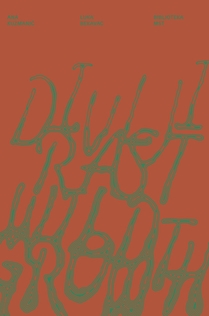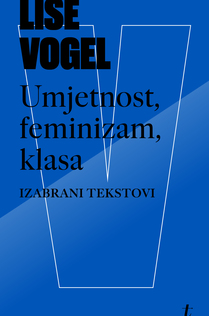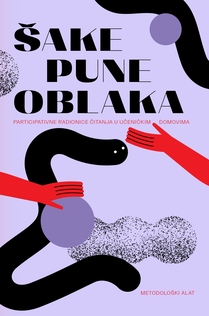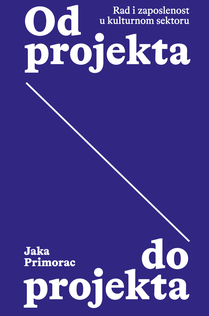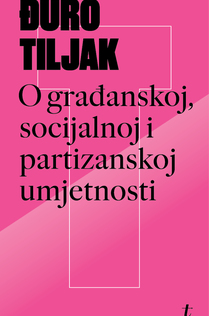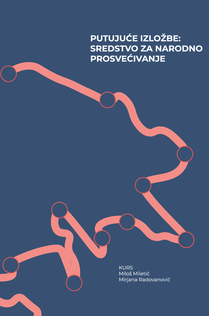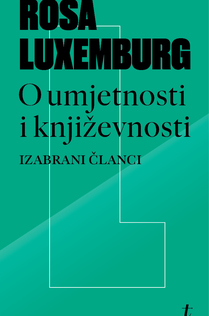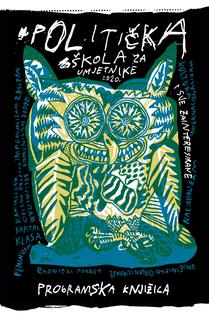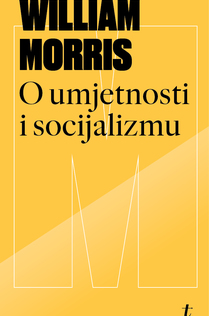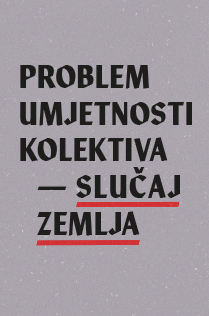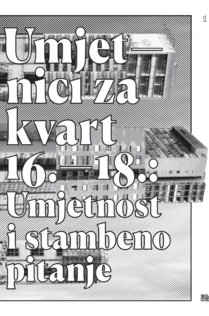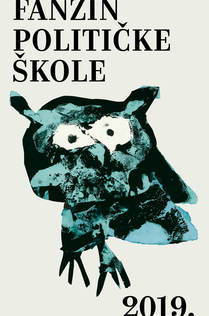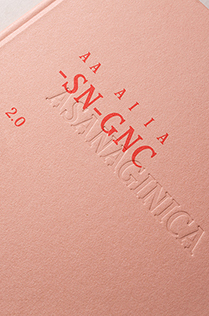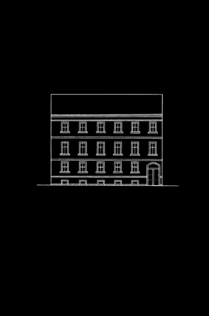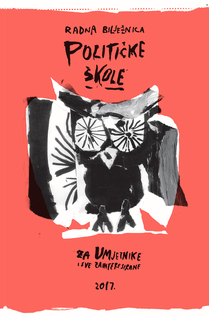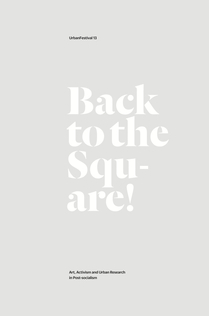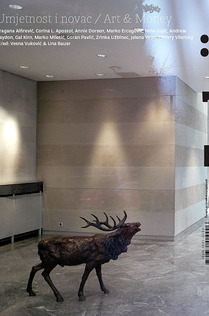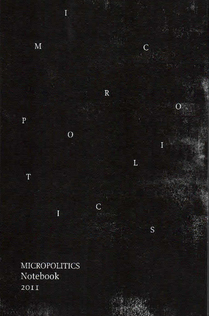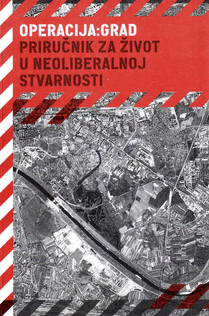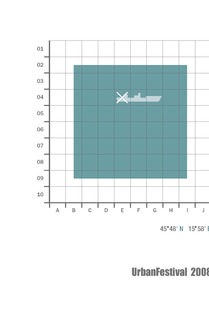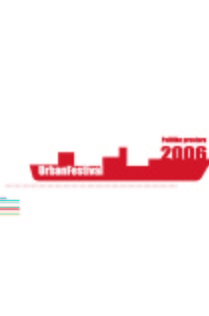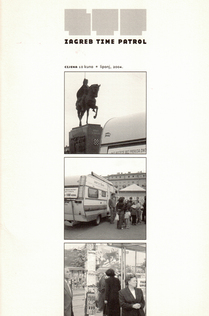FRAKCIJA #68/69: Art & Money
publishers: Centre for Drama Art and Academy of Dramatic Art
(jointly published with [BLOK] in the framework of the program Micropolitics)
authors: Dragana Alfirević, Corina L. Apostol, Annie Dorsen, Marko Ercegović, Nina Gojić, Andrew Haydon, Gal Kirn, Marko Miletić, Goran Pavlić, Zrinka Užbinec, Jelena Vesić, Dmitry Vilensky
editors of this issue: Vesna Vuković and Una Bauer
design: Ruta
year: 2013
language: Croatian/English
In the company of Hans’ circle of people from the world of finance, such as Rothschilds, says Jagoda, what gets spoken about is art, while artists, amongst themselves, speak mostly about money.
(“Moje kuće, moji snovi”, interview with costume and stage set designer Jagoda Buić, in Globus, no. 1086, 22 July 2011)
At least since the last economic crisis, and the so-called austerity measures which have mercilessly hit public finances (and in this part of the world artistic production is mainly financed by public funds), the issue of money gained stronger presence in the artistic sphere. It seems that the field of artistic production has finally been sensitized to social conditions which it demands and reproduces by its work. However it stays questionable, to say the least, whether we are dealing with an actual systemic critical reflection at the same time. Thus it is necessary to take a closer look at artworks which reflect this, until fairly recently, vulgar theme, and discourses which surround it and push it into circulation. We ask ourselves a simple question: how can art help us understand the social function of money? Does it offer us a special approach, pointing to a potential lack in economic and sociological analysis, or what we are dealing with here is a basic aestheticization of analytical insights by, so to speak, visual ornaments?
After the 60/61 issue of Frakcija entitled “Artistic Labor in the Age of Austerity” which articulated initial steps of materialistic analysis, this thematic issue can be viewed as a certain sequel. To continue for us means to try to attempt a series of close readings of selected artistic works/practices/positions in order to find out how this layer of capitalist reality, money, reflects itself in artistic processes and narratives. How does art wrestle with the (im)possibility of representation of money, considering that money is a social relation, and does that mean that money, being immaterial, is also unrepresentable? What does reproduction of capital mean in the sphere of art, especially on the background of experience of post-object art which teaches us that it is not enough to fix the object or to try to change it, if at the same time the entire operative structure which persistently produces such objects in their reality, has been reproduced. What is the relation between art and labour, especially considering the transformation of conditions created by financial capitalism?
The issue opens with Jelena Vesić’s text dealing with the administration of aesthetics, with the issue of contracting artistic work and – on the background of the establishment of autonomy of artistic field together with the introduction of wage labour – brings us a discoursive analysis of the modes of communication and affective tactics at play in contractual relations, showing how they are the result of a complicated relationship between art and money, or rather art and labour in capitalism. Andrew Haydon’s text is an overview of the resonances of financial crisis in contemporary British theatre, from 2009 till today, and the problem of staging capital, or rather, of the limited reach of these performances, considering the fact that, regardless of the theme, they reproduce capitalist means of production. Annie Dorsen narrates her personal experience of directing in a commercial context, on Broadway, and takes apart the illusion that commercial theatre is a successful financial model, tracing its dependence on public finances, but also on the so-called independent production. It was important for us to include in this context the conversation between the founders of Artleaks platform as an example of an organization of artistic workers struggling against exploitation, together with the limitations which such coming together into an association necessarily implies, from the difficulty of union organizing of the so-called creative workers to the lack of political force that would press for the transformation of social relations.
The second section brings the analysis of chosen art works that deal with the representation of capital. Dragana Alfirević reviews two performances by the choreographer Martin Schick (Halfbread Technique: Post-Capitalism for Beginners and Not My Piece) in which the author questions solidarity and its emancipatory potentials in capitalist society in the relation between producer, choreographer, dancer and the audience, but also questions the power of choreography as a way of organizing movement, both between the stage and the audience and amongst the spectators. Based on two works of Margareta Kern (The State of/and the Body and The Body Economic) Gal Kirn engages with the representation of the crisis, on the background of historical examples and insights from the 1930s. Marko Miletić analyses the work In the Light of the Arc by Zachary Formwalt, a video in which the artists uses the process of building the stock market in Shenzhen as a starting point for a discussion on the difference between manifestations of capitalism and its real consequences.
The final section is dedicated to the reviews of recent publications. Goran Pavlić reviews Ben Davis’ 9.5 Thesis on Art and Class, emphasizing the importance of its appearance in the sphere of visual arts criticism due to the insistence on systemic reflection of artistic production from Marxist perspective which the academic industry has pushed aside. Nina Gojić reviews the reader Parallel Slalom: A Lexicon of Non-aligned Poetics as an attempt at systemic representation and critical analysis of Yugoslav artistic practices (primarily of contemporary dance) emphasizing the necessity of considering the history of Yugoslav dance in a wider context than simply as an aesthetic category, thus in its specific social and political context. Reviewing the publication A Choreographer’s Score by Anna Teresa De Keersmaeker and Bojana Cvejić, Zrinka Užbinec asks questions about choreographic work, transfer of choreographic knowledge and possibilities of its socialization as a way of resistance to commodification.
Instead of matching the texts with expected visual materials we have decided to reproduce the photographs of Marko Ercegović from the cycle L.P, as an independent contribution articulated in a different language. The series of photographs dealing with Croatian business and bureaucratic environment have been taken in the past ten years, together with photographs for corporate needs. Useless for (self) representation of political and economic elite, placed in the framework of an art magazine, the photographs take us back to the initial question of the relationship and the role of art in the representation and reproduction of capital.
Frakcija can be ordered via e-mail: renata@cdu.hr (Renata Šparada).
